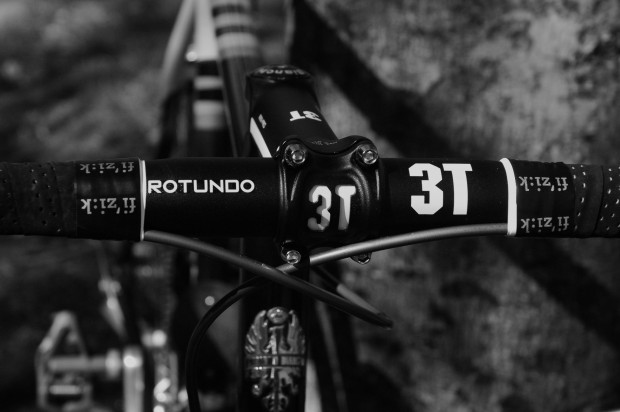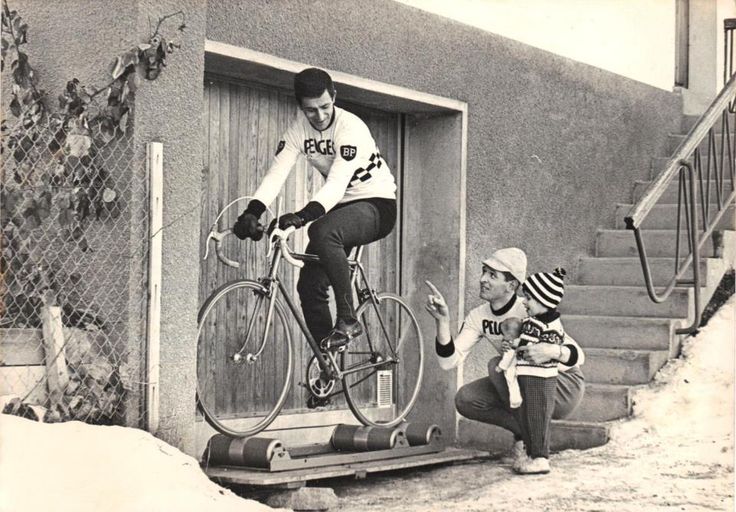Reverence: 3T Rotundo Pro

Mimic those who are better than you; this is the underlying principle of nearly everything I do in life, whether in my work, in sport, or hobbies. The less I know about something, the more inclined I am towards this, and the more faithfully I mimic. As my skill and knowledge develope, I mime less and reason more, applying my own mistakes as well as those of others to the process we commonly refere to as becoming ‘experienced’. This process continues until I grow into an opinionated sponge; while I continue to mop up any and every piece of information and advice I can get my hands on, I follow the path that is influenced still by advice, but dictated largely by the unique journey that lays behind me and the lessons I’ve learned along it. But still the underlying premise remains: The Pros must be onto something.
So it was that I became obsessed with classic-bend bars; Gilbert, Hushovd, Basso, Potato, Cadelephant, the Brothers Grimpeur – many of my favorite riders cruised into my heart aboard classic-bend bars. Not to mention the likes of Coppi, De Vlaeminck, Merckx, and Maertens – none of whom had a choice but rode them nevertheless. Over time, the swooping curve of a classic, round drop has found its place alongside the Quick Release, Delta Brake, and Record Hub as some of the Most Beautiful Bits of Kit.
I love the way the bars sweep up from the drops and position the hoods at an elegant, upward pitch as the bar continues it’s journey upward to meet the stem. Each classic-bend bar does this, yet the particular sweep of the 3T Rotundo does it more elegantly than any other; the exact radius of its bend and the pitch of its rise is perfection. I have another set of classic 3T bars which predate the Rotundo whose radius of the bend is within a millimeter of that of the Rotundo and yet the aesthetics are not it’s equal. Like all things of sublime beauty, there is something intangible about its curve that sets it appart from others.
But aesthetics are only skin deep, and the real measure of the bar is how comfortable it is. Since getting ahold of my first Rotundo, I’ve moved to classic bend bars on all my machines. I was apprehensive about the move from an ergo bend, which I’d always ridden, to the round bend of the Rotundos. Whereas I had always assumed that a flat section of bar would be more comfortable to grab hold of, this turns out not to be the case. Evidently, my hand is not straight and is in fact quite good at bending and forming to various shapes. Riding in the drops, wrists pointed inwards towards the V-Locus, my fingers grip the curved surface of the drops perfectly. The classic bend also reduces the reach from the drop to the brake lever, which means that long descents with frequent use of the brakes are also much more comfortable.
The positioning of the hoods is a slightly different matter and depends somewhat on the groupo. Bikes Number 1 and 2 both wear 10 speed Campa Record, while Bike Number 3 wears Dura-Ace 7700. The design of the Campa hoods resemble the Power Triangles of Merckx, while the design of the Shimano hoods more closely resemble pegs. The transition from the bar to the hoods on my Campa bikes is smooth like Keith Stone, allowing you to choose multiple positions along where bar meets hood. The design of the Shimano levers, on the other hand, cause them to stand up from the bar more abruptly, meaning that there are fewer comfortable positions available. It’s not really a significant issue, but it does provide less positions which can play a factor on longer rides.
As an aside, the matching 3T ARX stem meets nearly every expectation one can have of a stem; it’s light, stiff and simple. My only complaint is that it is only available in a 6 or 17 degree version; those of us who pay careful attention to how low or how high our bars are find that these two combinations don’t provide enough flexibility to dial in the position; I’m running the bars on Bike Number 3 and am stuck riding my bars about 5mm higher than on my other bikes. To be fair, this is not a shortcoming of the ARX stem in particular; very few manufacturers offer choices outside 6 or 17 degrees. However, for perfect positioning, 3T and others should add an 8 or 10 degree stem to the mix.

